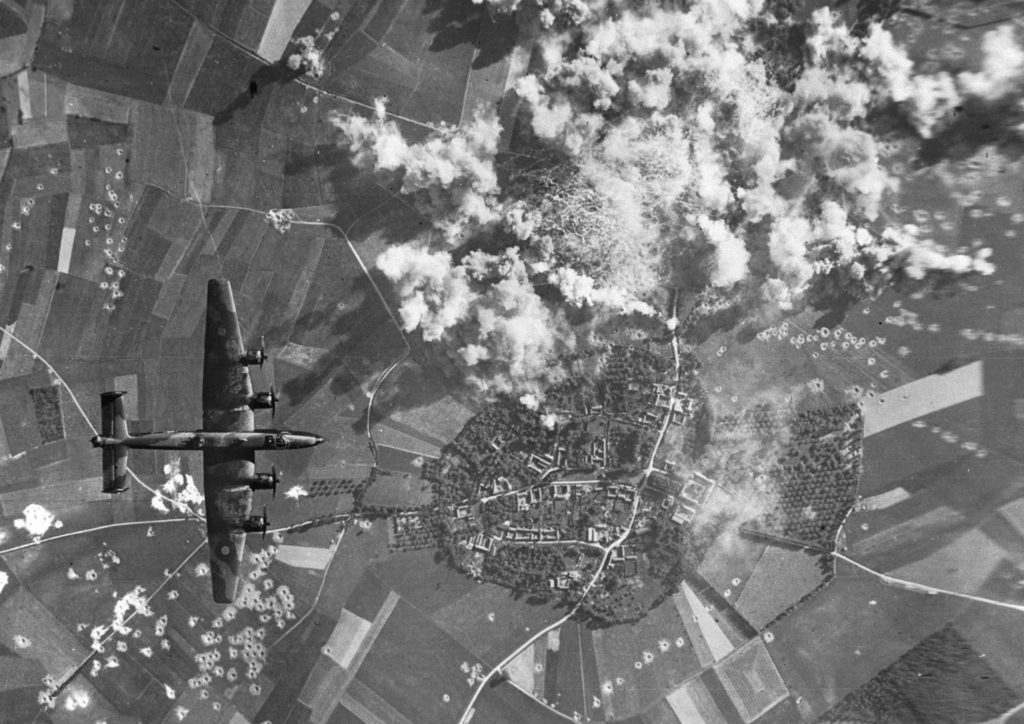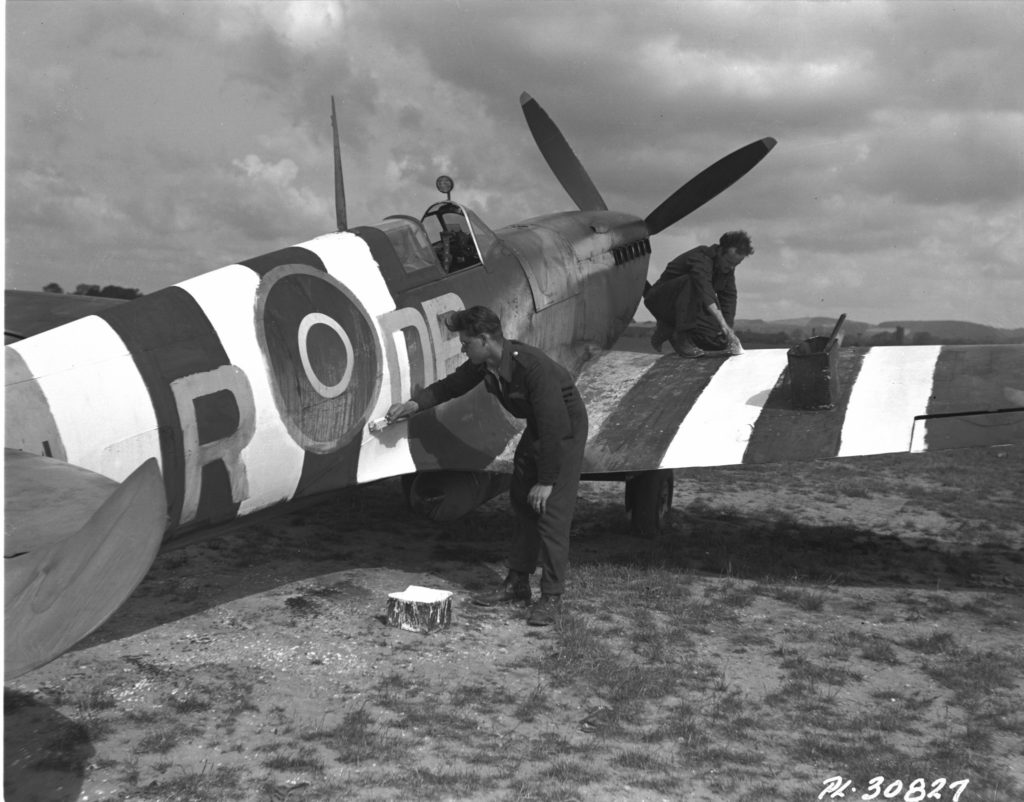Estimated reading time 6 minutes, 57 seconds.
The largest military invasion in history took place on June 6, 1944. The D-Day assault was a huge and complex undertaking–a multinational, combined operation involving hundreds of thousands of sailors, soldiers and airmen whose mission was to deliver freedom to Nazi-occupied Europe.
It began before dawn, when more than 23,000 paratroopers–including more than 450 Canadians–leapt into the night skies over Normandy. A few hours later, some 14,000 Canadian troops began coming ashore at a beach code-named “Juno.” The Canadian mission was to establish a beachhead along an eight-kilometre stretch in front of the villages of Courseulles-sur-Mer, Bernières-sur-Mer and Saint Aubin-sur-Mer. Once secure, the troops were to push on to Caen.

By day’s end, the Canadians on Juno Beach lost 340 killed, 574 wounded, with 47 taken prisoner. But of all the divisions that landed on June 6, the Canadians had gained the most ground by sundown.
Canadian airmen were among the first into action. Royal Canadian Air Force (RCAF) squadrons belonging to Bomber Command’s No. 6 Group had already been involved for several months in bombing key enemy targets in the invasion area: roads, bridges, railways, airfields, and command and communications centres. As the moment to launch the invasion neared, Allied bombers dropped thousands of tons of explosives on German coastal defences–about 6,000 tons in just the last few hours before the invasion.
On June 6, under overcast skies, RCAF fighter and fighter-bomber pilots flew with 171 Allied squadrons to protect the soldiers on the beach from the Luftwaffe and to attack German formations on the ground.
No. 441, No. 442 and No. 443 Squadrons of the RCAF became the first Allied aircraft to operate over France since 1940. They continued to support the Allied offensive throughout the campaign that followed, helping open the way to victory.
According to historians Hugh Halliday and Brereton Greenhous in Canada’s Air Forces 1914-1944, “the Luftwaffe could do little to counter the overwhelming mass of Allied aircraft supporting the invasion. Only about 300 aircraft of all types were available to meet the 11,000 that the Allies deployed on 6 June 1944.”
During the day on June 6, only two RCAF squadrons–442 and 401–reported contact with the enemy. On D+1–June 7–German air reinforcements began to arrive, however, and the battle for air supremacy became more challenging in the days that followed.
In all, the Royal Canadian Air Force had 42 operational squadrons overseas on D-Day; 37 of them supported the invasion, although not all of them saw action and others were carrying out activities far from the beaches. They flew as part of 2nd Tactical Air Force (Fighter Command), Bomber Command, Coastal Command and the Air Defence of Great Britain organization. Many more Canadians flew with Royal Air Force Squadrons.
Seven RCAF aircraft were lost, and 20 RCAF members were killed during operations in support of the landings.
An eyewitness account
Ivor Williams, a Spitfire pilot with 443 Squadron, assisted in patrolling Juno Beach on D-Day, warding off enemy fighters and providing cover for ships.
“I flew the last patrol at night on June the 5th [1944], and we were in the south of England, and in five minutes we were over the [English] Channel,” he told The Memory Project in an interview that is available on their website. “It was the most fantastic sight that I will ever see, all these boats coming out of little harbours and around the south coast of England and they were in formation.
“And we saw this, all these little arrow heads coming over the Channel, we knew that the beach invasion was on, and so we were not allowed to go over the German lines, because obviously reasons, but we had the aircraft were painted with black and white stripes at that point, so that there were no mistaking the Allied aircraft. And we did a recce and returned late at night, and then had a few hours’ sleep and took off the next morning, that was, and then we knew the invasion was on.

“And the sky was full of airplanes of course. We were circling back and forth over the beachhead, we didn’t go back, we were making sure that the German aircraft didn’t get to strafe our own troops, so it was a recce to make sure the sky was kept clear of enemy aircraft. We were back and forth, we could see there was fighting on the ground, we could see tanks blazing and trucks, we really knew the invasion was on at that time.”
Operation Overlord
Overall command of Operation Overlord–the invasion of Normandy–belonged to American General Dwight D. Eisenhower, a commander known for his conciliatory nature who united the extreme personalities making up the senior Allied command structure in England. British General Bernard L. Montgomery was appointed as the ground forces commander.
As a testament to Canada’s war effort, Supreme Allied Command tasked the Canadians with the responsibility of their own invasion beach, the only nation other than the United States and Britain accorded this honour.
The five beaches–Gold and Sword for the British, Utah and Omaha for the Americans, and Juno for the Canadians–were well defended and had been beefed up under the supervision of the superb Afrikakorps commander, Field Marshall Erwin Rommel. Backing Field Marshall Rommel’s forces and the German “Atlantic Wall” were 10 Panzergrenadier divisions, all in operation by the end of June 6.
The volume of men and materiel involved in the Normandy invasion was astounding: three airborne divisions, along with five infantry divisions, supported by armoured units from three nations to be landed on five separate beaches. Thousands of aircraft and 7,000 vessels had to be coordinated to move those personnel from Britain to assault the Nazi defences.
With files from The Memory Project, Veterans Affairs Canada, Major Brendan Bond and Lieutenant-Commander Alain Blondin.









Thank you I enjoyed reading your history. My Father-in-law was a gunner on the Saskatchewan. He never much commented on his experiences. I only heard of him mentioning a couple.